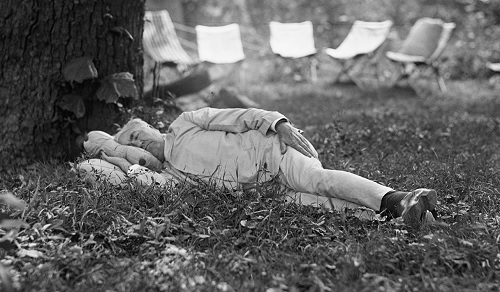Paris (ISJ): Thomas Edison used to take short naps to stimulate his creativity. During these naps, he held a metal ball in his hand. The ball would fall noisily when he fell asleep and wake him up just in time to record his creative flashes. Other famous people were also proponents of using short phases of sleep to stimulate their creative ability, such as Theoretical Physicist Albert Einstein and Spanish artist Salvador Dali.
Now, more than 100 years later, scientists have repeated the trick in a lab, revealing that the famous inventor was on to something. People following his recipe tripled their chances of solving a math problem. The trick was to wake up in the transition between sleep and wakefulness, just before deep sleep.
Inserm researcher Delphine Oudiette and her collaborator Célia Lacaux at the Inserm and Sorbonne University at the Paris Brain Institute were inspired by this story and wanted to explore this very particular phase of sleep. The scientists wanted to determine whether this phase did indeed have an effect on creativity. The results are published in Science Advances.
The team proposed mathematical problems to 103 participants, all of which could be solved almost instantly using the same rule, which was of course unknown to the participants at the start of the test. The subjects tried to solve the problems a first time. All those who had not found the hidden rule were invited to take a twenty-minute nap under the same conditions as Edison, with an object in their hand, before taking the mathematical tests again.
“Spending at least 15 seconds in this very first phase of sleep after falling asleep tripled the chances of finding this hidden rule, through the famous “Eureka! This effect disappeared if the subjects went deeper into sleep,” explains Célia Lacaux, the study’s first author. At the same time, the researchers highlighted several key neurophysiological markers of this creativity-generating sleep phase.
There is therefore a phase conducive to creativity at the time of falling asleep. To activate it, we need to find the right balance between falling asleep quickly and not falling asleep too deeply. These “creative naps” could be an easy and accessible way to stimulate our creativity in everyday life.
“The sleep phase has been relatively neglected by cognitive neuroscience until now. This discovery opens up an extraordinary new field for future studies, especially of the brain mechanisms of creativity. Sleep is also often seen as a waste of time and productivity. By showing that it is in fact essential to our creative performance, we hope to reiterate its importance to the public,” concludes Delphine Oudiette, Inserm researcher and final author of the study.
“It is a wonderful study,” says Ken Paller, a cognitive neuroscientist at Northwestern University who was not part of the research. Prior work has shown that passing through deep sleep stages helps with creativity, he notes, but this is the first to explore in detail the sleep-onset period and its role in problem-solving, according to a report in the Science.
Sources: Paris Brain Institute/The Science
Image courtesy: The Science


